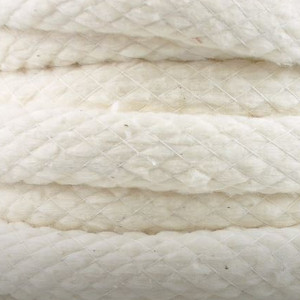 Piping is adding a separate fabric stitched to the edges for some extra attraction. The technique of how to sew piping on a pillow is quite straightforward. Piping can be of two types: corded as well as without cord.
Piping is adding a separate fabric stitched to the edges for some extra attraction. The technique of how to sew piping on a pillow is quite straightforward. Piping can be of two types: corded as well as without cord.
A folded strip is added on the sides of a fabric to form like a pipe-like structure. Hence, the word piping. It can be made of the same color as that of the material or a contrasting color to give an edgy look to the product.
Piping has uses in furniture seats, cushions, dresses, scarves, pillows, to name a few. The pipe can be both corded as well as non-corded. In corded piping, a cord or rope lies in between the fabric. It makes the piping firm and does not bend easily. Likewise, in non-corded piping, no such cord is used. The pipe makes up by folding the fabric twice.
How To Sew Piping On A Pillow
Supplies needed for simple and non-corded piping:
- Fabric for pillow cover
- Piping- same or contrasting to give an extra definition
- Pins
- Scissors
- Sewing machine
- Needle
- Thread
- Scissors
- Zipper foot
Step by Step Instructions of How to Sew Piping on a Pillow
- Measure and cut out four equal size fabric for the pillow or pillow cover
- Pinup with bobby pins and secure the outer side of one piece
- Align it with the piping by leaving some extra space for stitching
- Pinup to form a smooth corner
- Dissect the edges of the piping and pin it up
- After cutting all the sides of the pillow cover, keep the extra piping hanging and do not pin it.
- Start sewing with an ordinary zipper foot keeping it as smooth as possible so that the piping can slide through the fabric.
- Align the stitching on piping when you reach corners
- Once all the sides are sewed, overlap the extra piping on top of the starting point.
- After completion of one side, place the other layer of the fabric on top and sew it similarly.
- Cut out the extra fabric so reduce bulkiness.
- Turn the fabric inside out.
 A good sleep affects the productivity of the next day. Although very few people understand the importance of it. However, the correct position of the body makes it more relaxing. If not, it leads to backache, diabetes, headache, to name a few. Pillows that are too old do not serve their purpose. Remember to change it every 18 months, at least.
A good sleep affects the productivity of the next day. Although very few people understand the importance of it. However, the correct position of the body makes it more relaxing. If not, it leads to backache, diabetes, headache, to name a few. Pillows that are too old do not serve their purpose. Remember to change it every 18 months, at least.
You may purchase a new one or sew a similar one on your own. Sewing a pillow is not at all a difficult task. Customize it as per your needs and taste. Piping, buttons, and zippers add that other ethnicity in each of them. Cheaper pillows do not last long and affect the spine’s alignment with that of the head and neck. Always invest in a good quality one. Compromise, in this case, may prove to be expensive later.
Sewing Piping with a Cord on a Pillow
The addition of piping is an exciting method of transforming the look of a pillow or a cushion. Use similar materials for corded piping as in the non-corded one. The only addition is, of course, the cord itself.
- Fabric as per the preferable pillow size.
- Cord as per required thickness
- Bias tape in the desired color
- Matching thread
- Securing pins
The Procedure for Sewing Piping on a Pillow

- Step 1: Cut two exact fabrics according to the size of the pillow
- Step 2: Put the bias tape covering the cord, leaving some extra on the edges.
- Step 3: Place the edge of one of the fabrics with the edge of the tape. All three sides must be in the same alignment: two of tape and one of the material.
- Step 4: Pin it up at least 2 inches from the side.
- Step 5: Start stitching aligning the edge of the cord.
- Step 6: While reaching the corner, make around five snips to avoid damaging the cord.
- Step 7: Move towards the next or adjacent side.
- Step 8: When you reach the starting point, line up both the cord and the tape’s ends, then stitch it together.
- Step 9: Secure it with pins to avoid disturbing their position.
- Step 10: Trim any remaining portion of the fabric or threads.
Do not forget to wash the pillow covers to clean regularly. Replace it if there are stains that do not remove even after washing. If it is torn or smells due to sweat, change it. Old and dirty pillowcases shall induce allergy and a bad odor due to the growth of fungi and molds.
After a long and tiring day, give your body the much-needed rest and charge up for the next day. A healthy body will yield positive results. A night of good sleep for an ample amount of time shall let the brain function accordingly. However, a poor posture while sleeping will not do any good.
Choose your pillow as per your requirements, as mentioned in the above points, and have a night with tight sleep and sweet dreams.
How to Sew Piping on a Pillow: Final Thoughts
- Check that the snips at the corner are not protruding outside while sewing the back fabric. Or else it shall be visible in the final look.
- While adding a zipper on the cushion or pillow cover, avoid sewing it over the piping.
- Use a seam ripper or a pointed scissor to trim the extra stitches.
- After adding the piping, turn it inside out and iron it to get a wrinkle-free look.
Whenever you feel the need to remodel your living space, give your pillows, and cushions a makeover. The whole look of the area or your bedroom will become attractive. Add a pop of color on the pillows or their covers.
You can also add contrasting piping on the edge of the pillows too. Sew your pillow piping or stitch an attractive one and gift your friends.


